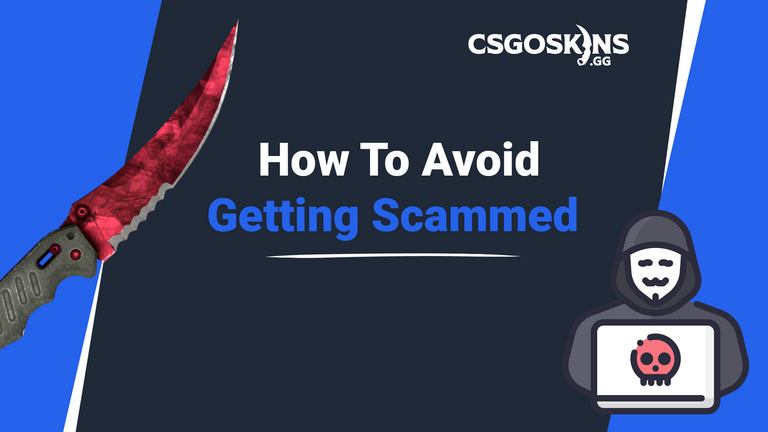Avoid Getting Scammed: The Most Dangerous CS2 Scams


Contrary to the beliefs of many, Valve’s popular FPS title Counter-Strike 2 wasn’t a massive hit at the time of its release. In fact, having been initially released in August 2012, the title failed to gain traction till mid-2014. There were a number of reasons behind the low player counts of CS2 during its initial days, including the predominant popularity of CS 1.6 and CS:S at the time, and the game itself being riddled with bugs that weren’t fixed until much later. It didn’t take long for the wheels to turn in favor of CS2, as the competitive shooter found itself skyrocketing in popularity over the next few years, thanks to a constant stream of updates shipped by the developers.
While there are a number of reasons behind the rapid success of Valve’s biggest FPS, what many fans consider to be the turning point is the ‘Arms Deal’ update of August 2013. The update brought a bunch of heavily requested features to CS2 including silenced guns (M4A1-S & USP-S), and most importantly weapon skins and cases.
Scamming: An Age-Old Problem in CS2
With the introduction of weapon skins, Valve also enabled players to trade skins between themselves and sell them on the Steam market. As a result, some players looking to make a quick buck would resort to illegal methods that involved exploiting other users to steal their CS2 skins - commonly referred to as scamming - a problem that exists in the community to this day.
Over the years, the issue has become increasingly concerning as scammers continue to find new ways to exploit or bypass Steam’s security to steal CS2 skins worth thousands of dollars from other users. This is why, CS2 players should take the necessary precautions beforehand to avoid getting scammed online.
It’s important to note that even if you don’t have valuable skins in your CS2 inventory, scammers can still hijack your Steam account and change the credentials to gain access to your library.
In this article, we’re gonna help you gain awareness about some of the most common and dangerous methods of scamming that you may encounter online. We’ll also suggest some of the most efficient methods to avoid getting scammed and what changes you can do to your Steam account to never get locked out of it again.
The Most Common CS2 Scams
Let’s take a look at some of the most common albeit dangerous CS2 scams that scammers use to rip you off your skins and items.
Phishing Scams
‘Phishing’ is by far the most common method that scammers use to get access to your account and steal your skins. There are a plethora of variations to this form of scam, and it’s impossible to list them all here.
However, we can tell you a simple tip that’ll render you immune to these kinds of scams: Never click on sketchy links from strangers.
Usually, these links are sent to you by random friends on Steam and while these may seem normal at first, they’re designed to steal your Steam login info once you click on them or try to log in through your Steam account.
Sometimes, the scammer will ask you to log into a third-party website to “vote for his team”, while other times they may try to convince you that you won a giveaway and you need to log in to similar websites to redeem your prize. If someone tries to send you these ‘phishing links’ via Steam, block them and report their profiles on Steam.
Impersonation Scams
To execute these types of scams, the scammer will pose as a Steam employee and message you claiming that there’s an issue with your account. They may ask you for your login credentials, demand that you trade your items to them for security, or urge you to log into a sketchy website. These scammers generally go the extra mile and get a high level on their Steam account to make their story look believable. Once again, there are a bunch of variations to this scam, but you should be able to avoid impersonators pretty easily if you stay cautious.
Remember that Steam employees will never contact you and ask for your login information. If you see anyone impersonating a Steam employee, don’t forget to report their profiles.
Trade Scams
These kinds of scams used to be way more popular back in the day, but have decreased significantly over the past few years due to the increased security measures that Valve has taken to make item trading on Steam much safer. However, they still exist, and if you’re not cautious when trading CS2 skins then you can still get scammed in the blink of an eye.
These scams generally happen during live trades where the scammer promises to give you a certain valuable item, but quickly switches out the item from the trade hoping that the victim doesn’t notice. There are also other variations to this scam, but if you’re cautious during your trades then the scammers are extremely unlikely to be able to pull them off.
Trade scams can also happen when someone promises you a valuable item from a different game. They may send you the actual item in exchange for your CS2 skins, but once you receive the item you’ll notice that the item is so unpopular that it’ll never sell on the marketplace. So, you’re effectively stuck with the item forever, which makes it worthless.
API Scams
Technically, API scams fall under the category of phishing, but it’s undoubtedly one of the most dangerous scams that you will ever encounter on Steam. Similar to the aforementioned scams, the scammer will try to get you to log into a third-party website and steal your login credentials. However, they won’t do any real harm to your account except steal your Steam API key. You will have no clue that your account has been compromised till you make a trade on the platform.
Once someone sends you a trade offer on Steam, the scammer uses the API key to automatically cancel that trade, impersonate the account that sent you the offer, and send you a duplicate trade offer that is indistinguishable from the real offer at first glance. Once you use your mobile authenticator to accept the trade, your items are gone.
Once again, the only way to avoid API scams is to steer clear of phishing links in general. Never trust random links that require you to log in through your Steam account.
What To Do If Your Account is Already Compromised?
If you suspect that your account has already been compromised, here’s what you can do:
- Scan your computer for malware and remove any that you find.
- Change the password of your Steam account and the linked email.
- Contact Steam support if you need to recover your account (you will need some form of proof of ownership for doing so).
- Remove any API key that may have been generated by hackers. You can do so by going here.
- Create a new trade URL for your Steam account.
- You can also choose to lock your Steam account if needed.
Conclusion
Remember this: If you think it’s too good to be true, it probably is.
It’s extremely unlikely that someone will offer you free items, games, or other gifts on Steam. If anyone claims to give you free stuff, they’re almost certainly a scammer. As time progresses, scammers are constantly coming up with new methods to social engineer naive users and steal their accounts and CS2 skins. Stay alert, remain cautious, and try not to trust anyone that you don’t know in person. Also, remember to regularly check your PC for viruses and malware. These few simple steps are all it takes for you to never get scammed again.


